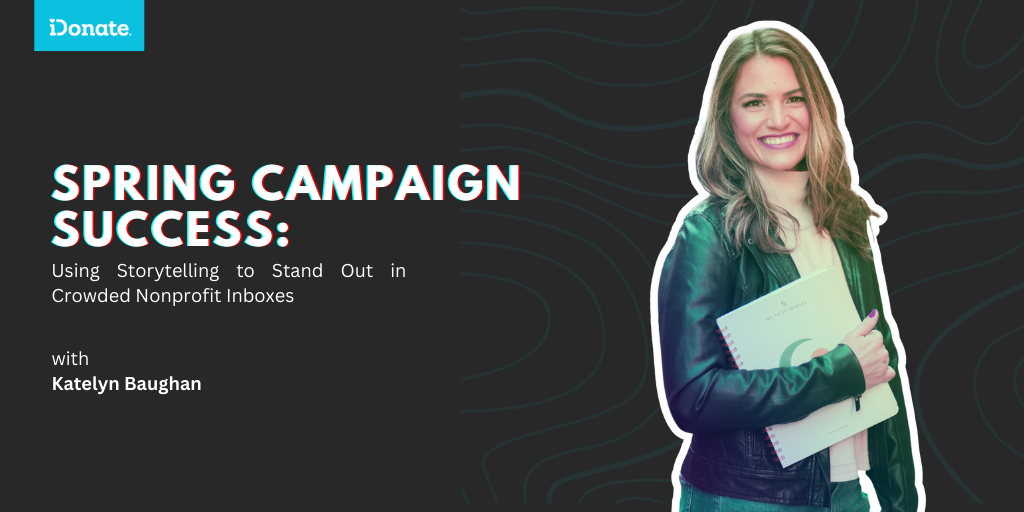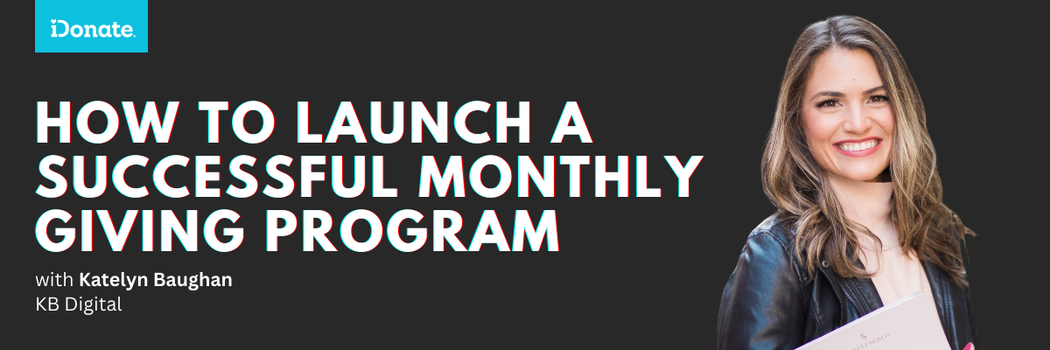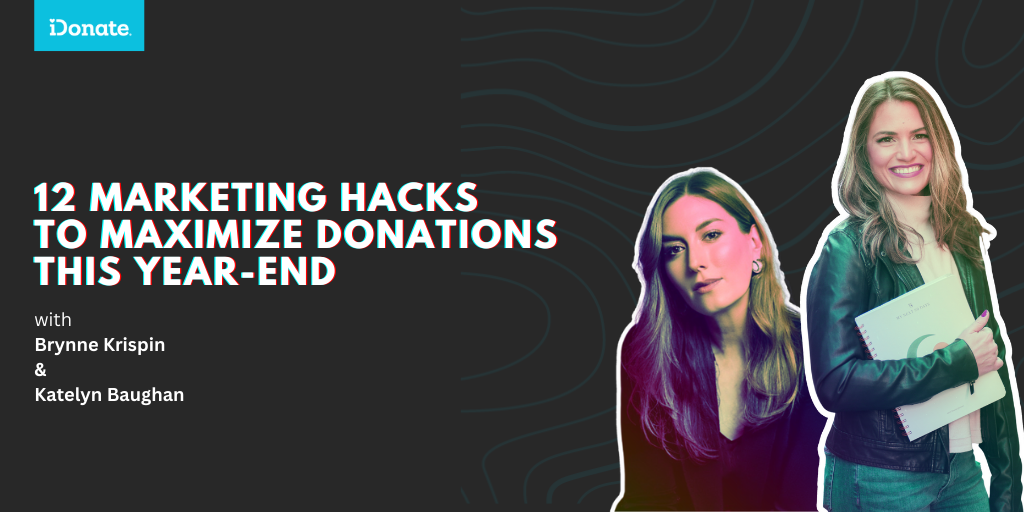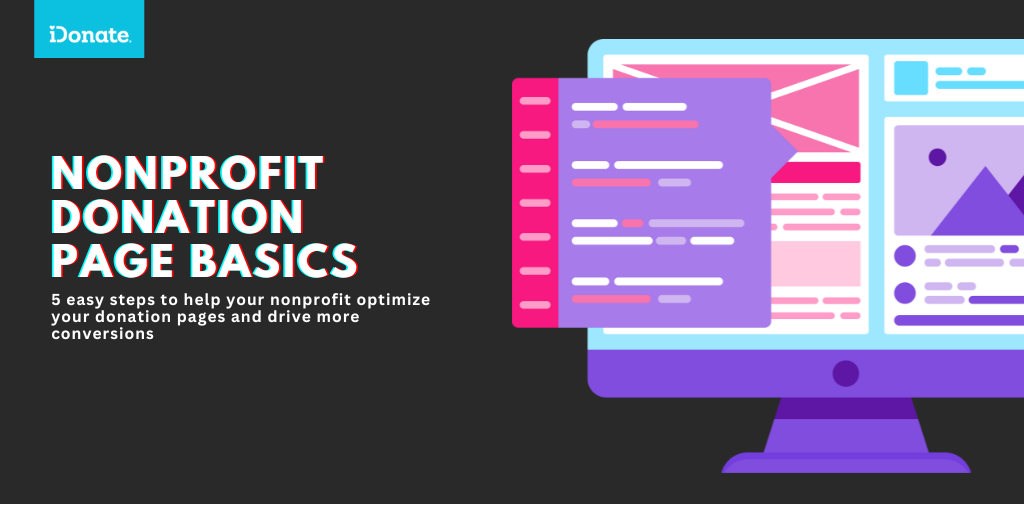How to Launch a Successful Monthly Giving Program
If you’re anything like me, you’re willing to pay a little bit of money to make your life a lot easier.

Use no-code tools to quickly build donation page variants, launch A/B tests, and get clear results that help you drive more donor conversions with a single platform.
New to online donation pages for your nonprofit? Start here.
Donation page A/B testing - no science degree needed.
Keep your donation page loading fast - and drive higher conversions.
5 min read
 Katelyn Baughan
:
April 7
Katelyn Baughan
:
April 7

In the digital fundraising landscape, nonprofits with compelling stories see higher donation completion rates than those relying on facts alone. As your organization launches its spring campaign, you're not just competing for donations—you're competing for attention in increasingly crowded inboxes.
The most successful fundraisers understand a fundamental truth: your donation form isn't a standalone tool. It's the destination of an emotional journey that begins long before a supporter clicks "donate." When you craft emails that tell a compelling story, you create a natural path that leads supporters to not just visit your donation form, but to complete it with enthusiasm and purpose.
Think of your donation form as the final chapter in your story—a place where emotion meets action. That’s why customizable donation forms, like those from iDonate, are essential to keep your narrative intact all the way to conversion.
Research published in the Journal of Behavioral Decision Making shows that narrative-driven appeals featuring identifiable individuals can generate significantly higher donations—in some studies nearly twice as much—compared to appeals using statistical information alone. Why? Because stories fundamentally change how our brains process information:
When applied to email marketing, storytelling directly impacts your metrics.
The most effective fundraising stories unfold across multiple touch points. For spring campaigns, consider this three-email sequence that builds momentum toward conversion:
This first email establishes the foundation of your narrative by:
Subject line example: "Maria's garden was empty until..."
Rather than immediately asking for donations, this email plants the seed of your story. Include a subtle call-to-action like "Read Maria's full story next week" to create anticipation.
Your second email builds on the foundation by:
Subject line example: "The unexpected turn in Maria's garden story"
This email deepens emotional investment while introducing your solution. Include a secondary call-to-action like "Learn how you can help" that begins transitioning toward action.
Your final email completes the narrative arc by:
Subject line example: "You can write the ending to Maria's story"
This email makes the donation form the natural next step in the story's resolution. Your primary call-to-action should be clear and compelling: "Complete Maria's story with your gift."
Donors give to help people, not programs. Develop authentic characters by:
Pro tip: Make your story stick by carrying your character into the final step. A photo and quote on the donation form keeps the emotional thread intact—something iDonate’s form editor makes easy.
Effective fundraising narratives balance tension with hope:
Spring campaigns naturally lend themselves to themes of renewal, growth, and transformation—perfect narrative elements for creating positive tension.
Vague appeals generate vague results. Enhance your narrative with:
When donors reach your iDonate form, maintain this specificity by customizing donation amounts with exactly what each level will provide.
Images and design elements should enhance your narrative:
iDonate's form customization allows you to extend your visual storytelling directly onto your donation page, creating a seamless experience.
From inbox to impact, your visuals should tell one continuous story. With tools like iDonate’s form builder, that visual narrative doesn’t stop at the email—it flows right through to your donation page.
The moment a supporter clicks through to your donation form is critical. Donation form abandonment rates average between 50-70%, with inconsistent messaging being one of several key factors (NextAfter).
Subject: Spring brings hope to Valley Youth Center—except for one corner
Email Content Highlights:
Call-to-Action: "Watch Jamal's garden story unfold next week"
Subject: What happened when Jamal tried to start the garden
Email Content Highlights:
Call-to-Action: "Learn how you can help Jamal's garden grow"
Subject: You can help Jamal's garden bloom this spring
Email Content Highlights:
Call-to-Action: "Help Jamal's garden grow with your gift today"
iDonate Form Elements:How to Translate Story to Form (Using iDonate donation forms)
When you craft a compelling narrative journey that culminates at your donation form, you transform the giving experience from a transaction into meaningful participation in your mission. Your spring campaign becomes not just a fundraising effort, but a story that donors want to join.
About KB Digital
KB Digital is a Nonprofit Email Marketing Consultancy that empowers nonprofits to amplify their impact through strategic email and SMS marketing.
About the Author
Katelyn Baughan is a nonprofit email consultant who helps organizations harness email marketing to fuel fundraising success. With a proven track record managing multi-million-dollar campaigns for clients like National Geographic, The Trevor Project, and UNHCR, Katelyn brings expertise and passion to every project.
Founder of KB Digital since 2018, Katelyn blends strategic insight with certifications in email marketing, Google Analytics, and digital fundraising. Her mission is simple: empower nonprofits to maximize impact through data-driven email strategies, all while enjoying more time with her family.

If you’re anything like me, you’re willing to pay a little bit of money to make your life a lot easier.

As the year draws to a close, nonprofits everywhere are gearing up for one of the most critical times in the fundraising calendar. The year-end...

Why Your Donation Page Matters More Than You Think Imagine this: a potential donor clicks through to your nonprofit’s donation page, ready to support...